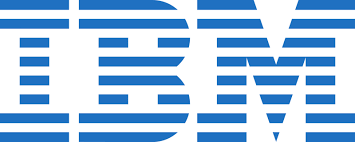

IBM has been at the forefront of quantum computing research and development for over three decades, positioning itself as a pioneer and leader in the field. The company's quantum initiative, known as IBM Quantum, represents one of the most comprehensive and ambitious efforts to bring quantum computing technology to practical reality. IBM's approach combines cutting-edge hardware development, extensive software and algorithm research, and a strong focus on building a global quantum ecosystem.
At the core of IBM's quantum strategy is the development of superconducting qubit technology. IBM has made significant strides in this area, regularly announcing new milestones in qubit count and performance. The company's roadmap aims to scale up to processors with over 1000 qubits, a goal that could bring quantum computing closer to solving real-world problems that are intractable for classical computers.
One of IBM's most notable contributions to the quantum field is the IBM Quantum Experience, launched in 2016. This cloud-based platform provides researchers, developers, and curious minds worldwide with access to real quantum hardware and simulators. This democratization of quantum access has been instrumental in growing the quantum community and accelerating research and education in the field.
IBM has also been a leader in developing quantum software tools and frameworks. The company's Qiskit open-source framework has become one of the most widely used tools for quantum programming, allowing users to write and run quantum circuits on various backends, from simulators to real quantum devices.
The company's quantum efforts extend beyond pure technology development. IBM has been actively building a quantum ecosystem, fostering collaborations with academic institutions, industry partners, and startups. The IBM Quantum Network brings together Fortune 500 companies, academic institutions, and research labs to explore practical quantum applications in fields such as finance, chemistry, and artificial intelligence.
## Technical Deep Dive
IBM's quantum hardware is based on superconducting transmon qubit architecture. These qubits are made from superconducting circuits that include Josephson junctions, which exhibit quantum behavior when cooled to extremely low temperatures, typically around 15 millikelvin. IBM's latest quantum processors, such as the 127-qubit Eagle and the 433-qubit Osprey, represent significant advancements in scalable quantum hardware.
The qubits in IBM's processors are arranged in a specific topology that allows for connectivity between multiple qubits. For example, the Eagle processor uses a heavy-hexagon lattice structure, which provides a balance between connectivity and reduced crosstalk between qubits. This topology is crucial for implementing multi-qubit gates and complex quantum circuits.
IBM implements quantum gates using microwave pulses. Single-qubit gates are realized through resonant drives at the qubit frequency, while two-qubit gates often use cross-resonance drives that exploit the coupling between adjacent qubits. IBM has achieved high gate fidelities, with single-qubit gate fidelities exceeding 99.9% and two-qubit gate fidelities above 99% in their best systems.
On the software side, IBM's primary tool is Qiskit, an open-source framework for quantum computing. Qiskit is written in Python and provides tools for creating and manipulating quantum circuits, running them on simulators or real quantum hardware, and analyzing the results. Qiskit is structured into several components:
1. Qiskit Terra: The foundation that provides tools to create quantum circuits at the level of quantum assembly language.
2. Qiskit Aer: A high-performance simulator framework for quantum circuits.
3. Qiskit Ignis: Tools for characterizing noise and mitigating errors in quantum systems.
4. Qiskit Aqua: A library of quantum algorithms for applications in chemistry, finance, machine learning, and optimization.
IBM has also developed higher-level abstractions and tools within Qiskit, such as the Circuit Library, which provides pre-built quantum circuits for common operations, and the Pulse Library, which allows for fine-grained control of the quantum hardware at the level of microwave pulses.
A significant focus of IBM's research is on quantum error correction and fault tolerance. The company is exploring various quantum error correction codes, including surface codes and low-density parity check (LDPC) codes. These are crucial for building large-scale, fault-tolerant quantum computers that can perform long computations without being overwhelmed by errors.
IBM is also at the forefront of developing hybrid quantum-classical algorithms. These algorithms, suitable for near-term quantum devices, combine quantum and classical processing. Examples include the Variational Quantum Eigensolver (VQE) for chemistry simulations and the Quantum Approximate Optimization Algorithm (QAOA) for combinatorial optimization problems.
In the realm of quantum applications, IBM is exploring a wide range of fields:
1. Quantum Chemistry: Using quantum computers to simulate molecular systems for drug discovery and materials science.
2. Quantum Finance: Applying quantum algorithms to portfolio optimization, risk analysis, and option pricing.
3. Quantum Machine Learning: Investigating quantum versions of machine learning algorithms and quantum-enhanced data classification.
4. Quantum Optimization: Exploring how quantum computers can solve complex optimization problems in logistics, supply chain management, and more.
IBM has also made significant advancements in the control systems for quantum computers. Their Quantum System One, introduced in 2019, represents one of the first integrated quantum computing systems designed for commercial use. It includes sophisticated cryogenic and control electronics systems that enable the precise control and measurement of qubits.
To support the growing quantum ecosystem, IBM has developed Qiskit Runtime, a containerized service for quantum programs. This allows users to run quantum programs with classical pre- and post-processing on the cloud, close to the quantum hardware, significantly reducing latency and increasing the complexity of possible quantum workflows.
IBM's commitment to quantum computing extends to quantum education and workforce development. Through initiatives like the Qiskit Global Summer School and partnerships with universities, IBM is helping to train the next generation of quantum scientists and engineers.
As quantum computing continues to evolve, IBM's comprehensive approach - encompassing hardware, software, applications, and ecosystem development - positions the company as a key player in shaping the future of this transformative technology. While significant challenges remain in scaling up quantum systems and achieving fault tolerance, IBM's progress and roadmap offer a promising vision of a quantum-powered future.Write your text here...
